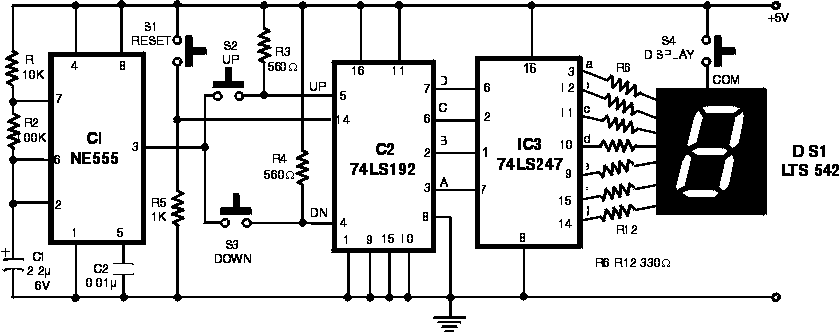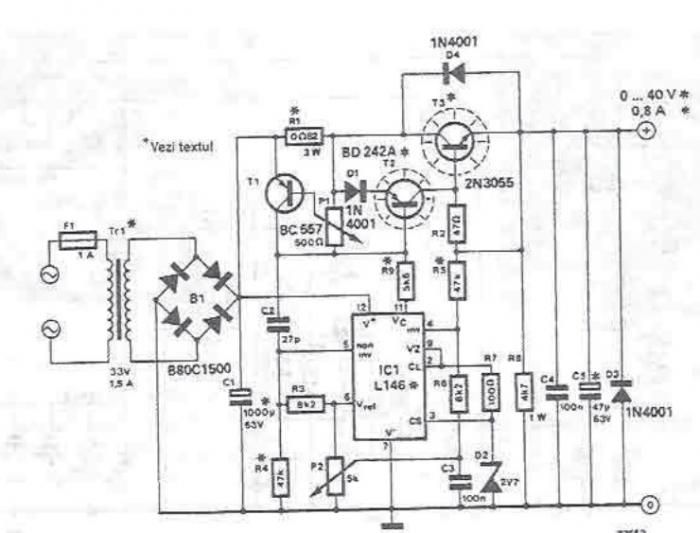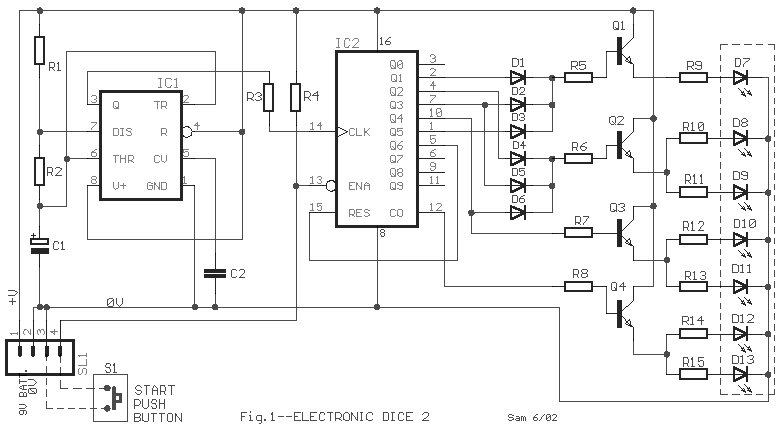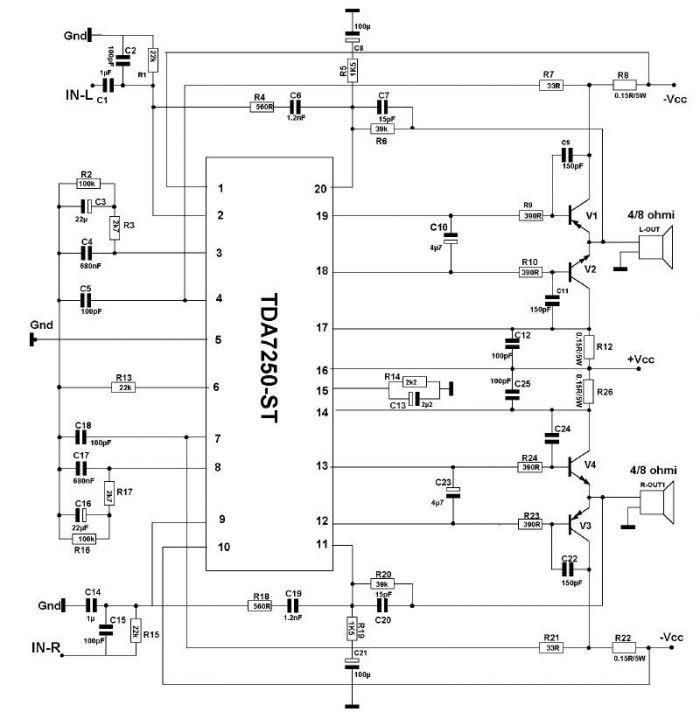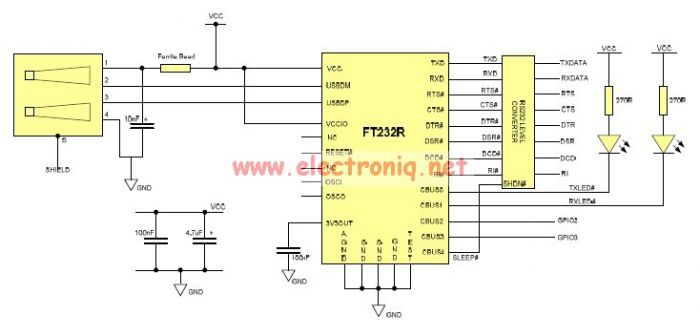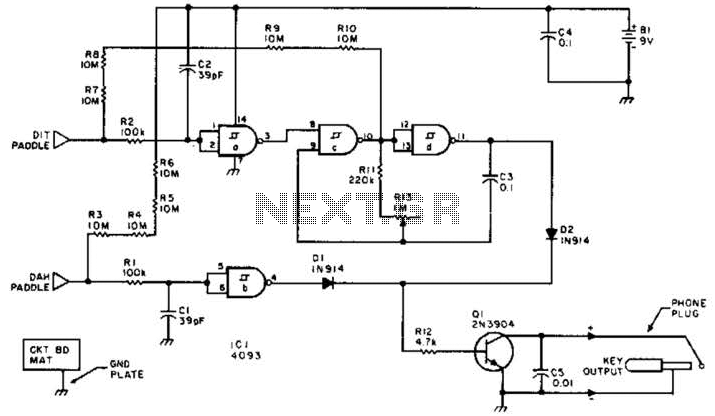
Electronic Cricket Match Game
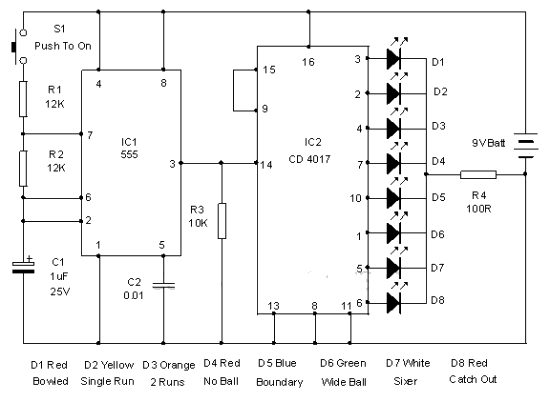
This electronic cricket device is a gift for children. This simple battery-powered circuit can be used to simulate a cricket match with friends. Each LED in the circuit represents various statuses of the cricket match, such as a six, run out, or catch. The circuit employs two integrated circuits (ICs), one configured in astable mode and the other functioning as a display driver. IC1 is set up as an astable multivibrator with timing components R1, R2, and C1. With the specified values of these components, rapid output pulses are generated from the astable circuit. The output from IC1 is fed into the input of IC2, which is the well-known Johnson decade counter CD4017. This IC has ten outputs, of which eight are utilized. Output 9 (pin 9) is connected to the reset pin (pin 15) to allow the cycle to repeat. When the input pin 14 of IC2 receives a low-to-high pulse, its outputs sequentially go high. Resistor R3 maintains a low state at the input of IC2 during standby to prevent false indications. When the push switch S1 is pressed momentarily, the astable circuit activates, causing all the LEDs to light up rapidly in sequence. Upon releasing S1, one LED remains illuminated, indicating the match status. For instance, if LED D7 stays lit, it signifies a six, while LED 8 indicates a catch out. Each LED should be labeled according to its corresponding status as depicted in the diagram. Pressing S1 simulates bowling, and the running LEDs indicate the batsman's movement.
The electronic cricket circuit is designed to engage children in a playful and interactive manner, allowing them to simulate cricket matches while learning basic electronic principles. The astable multivibrator configuration of IC1 generates a continuous stream of square wave pulses at a frequency determined by the values of R1, R2, and C1. This rapid oscillation is essential for creating a dynamic visual experience through the LEDs.
The CD4017 decade counter, as IC2, is particularly well-suited for this application due to its ability to count and provide multiple outputs in a sequential manner. As each pulse from IC1 triggers the counter, it activates the LEDs in a specific order, providing feedback on the simulated cricket match's status. The use of a reset pin allows the circuit to return to its initial state, enabling repeated play without manual intervention.
The push switch S1 serves as the primary control interface for the user, initiating the sequence of LED activation. The inclusion of resistor R3 is crucial for ensuring the stability of the circuit during standby, thereby preventing erroneous LED indications when the circuit is not actively engaged in play.
In summary, this electronic cricket circuit not only serves as a fun toy for children but also introduces them to fundamental concepts of electronics, such as oscillation, counting, and circuit control, all while fostering an engaging play environment. Each LED's function is clearly defined, allowing for easy understanding and interaction during gameplay.This electronic cricket is a present for Kids. This simple battery powered circuit can be used to play Cricket Match with your friends. Each LED in the circuit indicates various status of the cricket match like Sixer, Run out, Catch etc. The Circuit uses two ICs, one in the Astable mode and the second in the display driver mode. IC1 is wired as an Astable Multivibrator with the timing elements R1, R2 and C1. With the shown values of these components very fast output pulses are generated from the Astable. Output from IC1 passes into the input of IC2 which is the popular Johnson Decade counter CD4017. It has 10 outputs. Of these 8 outputs are used. Output 9 ( pin9) is tied to the reset pin 15 to repeat the cycle. When the input pin 14 of IC2 gets low to high pluses, its output turns high one by one. Resistor R3 keeps the input of IC2 low in stand by state to avoid false indications. When the Push Switch S1 is pressed momentarily, the Astable operates and all the LEDs run very fast sequentially. When S1 is released, any one of the LED stands lit which indicates the status of the match. For example, if LED D7 remains lit, it indicates Sixer and if LED 8 remains lit, it indicates Catch out.
Label each LED for its status as shown in the diagram. Pressing of S1 simulates Bowling and Running LEDs indicates running of Batsman. 🔗 External reference
The electronic cricket circuit is designed to engage children in a playful and interactive manner, allowing them to simulate cricket matches while learning basic electronic principles. The astable multivibrator configuration of IC1 generates a continuous stream of square wave pulses at a frequency determined by the values of R1, R2, and C1. This rapid oscillation is essential for creating a dynamic visual experience through the LEDs.
The CD4017 decade counter, as IC2, is particularly well-suited for this application due to its ability to count and provide multiple outputs in a sequential manner. As each pulse from IC1 triggers the counter, it activates the LEDs in a specific order, providing feedback on the simulated cricket match's status. The use of a reset pin allows the circuit to return to its initial state, enabling repeated play without manual intervention.
The push switch S1 serves as the primary control interface for the user, initiating the sequence of LED activation. The inclusion of resistor R3 is crucial for ensuring the stability of the circuit during standby, thereby preventing erroneous LED indications when the circuit is not actively engaged in play.
In summary, this electronic cricket circuit not only serves as a fun toy for children but also introduces them to fundamental concepts of electronics, such as oscillation, counting, and circuit control, all while fostering an engaging play environment. Each LED's function is clearly defined, allowing for easy understanding and interaction during gameplay.This electronic cricket is a present for Kids. This simple battery powered circuit can be used to play Cricket Match with your friends. Each LED in the circuit indicates various status of the cricket match like Sixer, Run out, Catch etc. The Circuit uses two ICs, one in the Astable mode and the second in the display driver mode. IC1 is wired as an Astable Multivibrator with the timing elements R1, R2 and C1. With the shown values of these components very fast output pulses are generated from the Astable. Output from IC1 passes into the input of IC2 which is the popular Johnson Decade counter CD4017. It has 10 outputs. Of these 8 outputs are used. Output 9 ( pin9) is tied to the reset pin 15 to repeat the cycle. When the input pin 14 of IC2 gets low to high pluses, its output turns high one by one. Resistor R3 keeps the input of IC2 low in stand by state to avoid false indications. When the Push Switch S1 is pressed momentarily, the Astable operates and all the LEDs run very fast sequentially. When S1 is released, any one of the LED stands lit which indicates the status of the match. For example, if LED D7 remains lit, it indicates Sixer and if LED 8 remains lit, it indicates Catch out.
Label each LED for its status as shown in the diagram. Pressing of S1 simulates Bowling and Running LEDs indicates running of Batsman. 🔗 External reference
